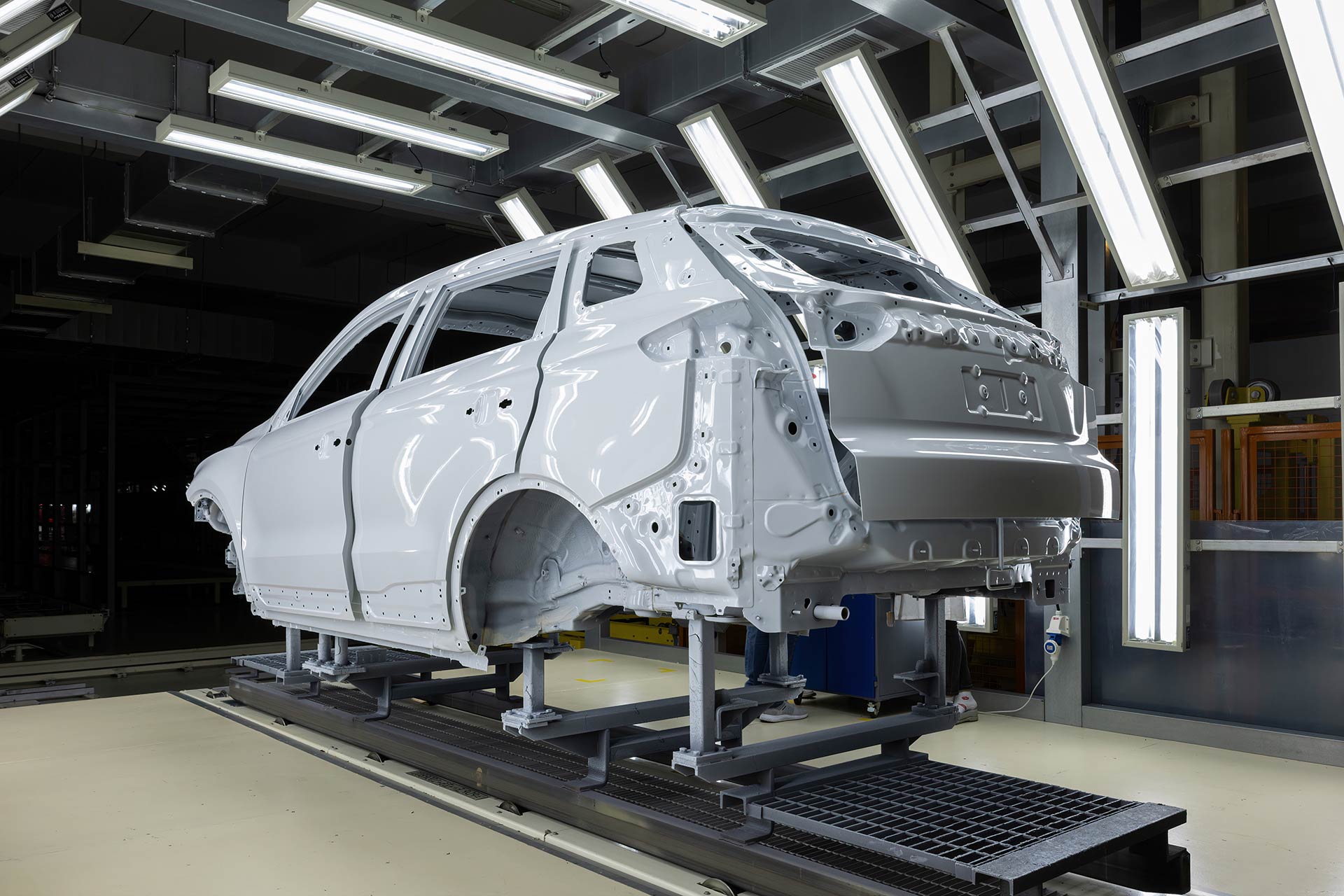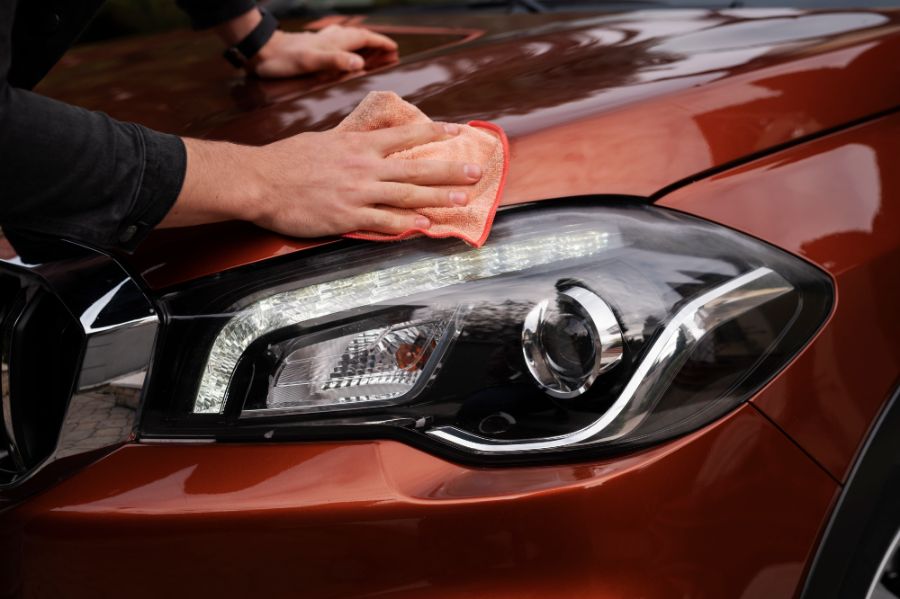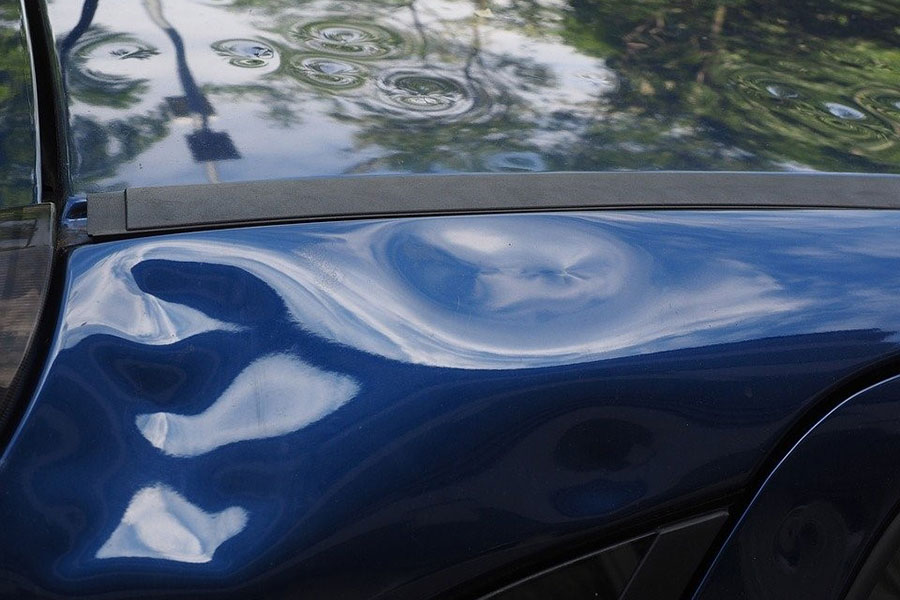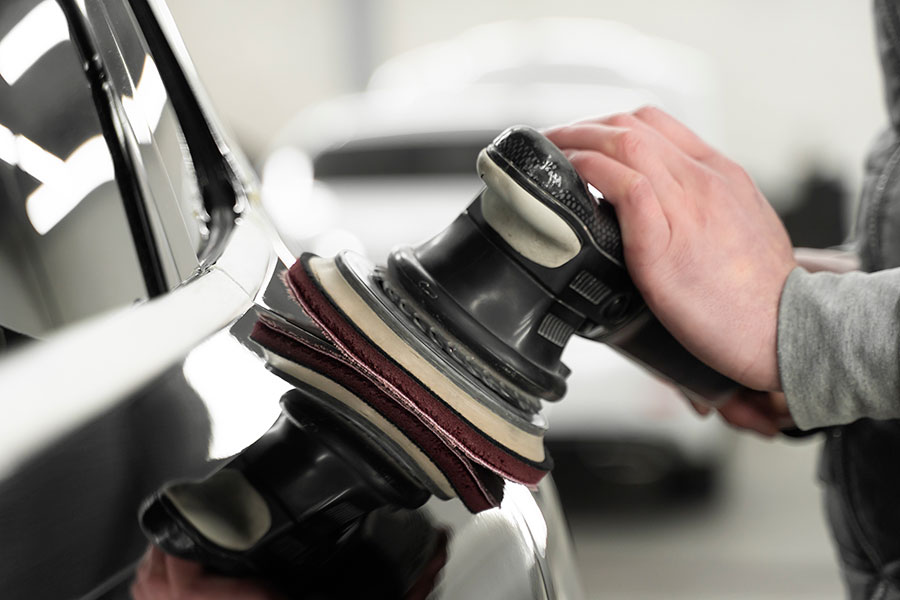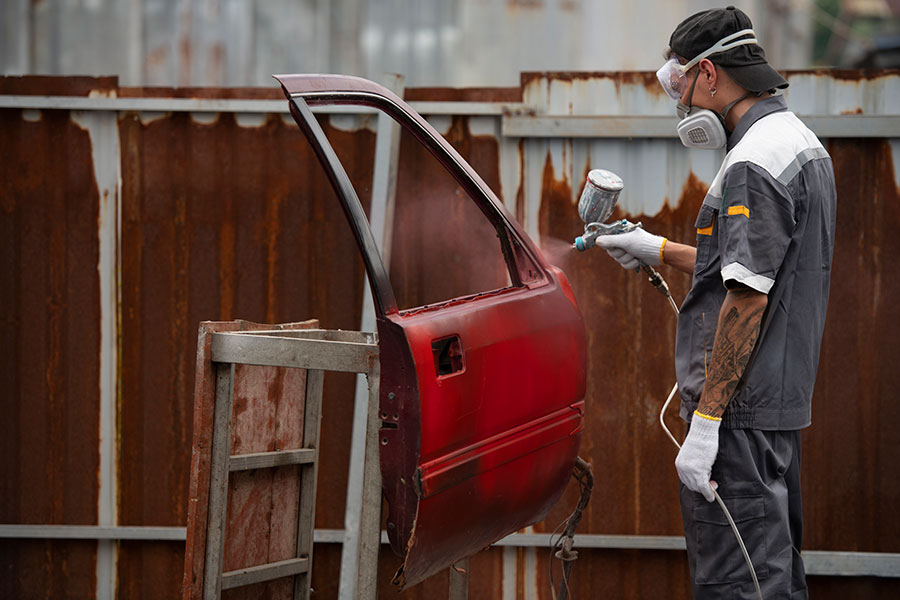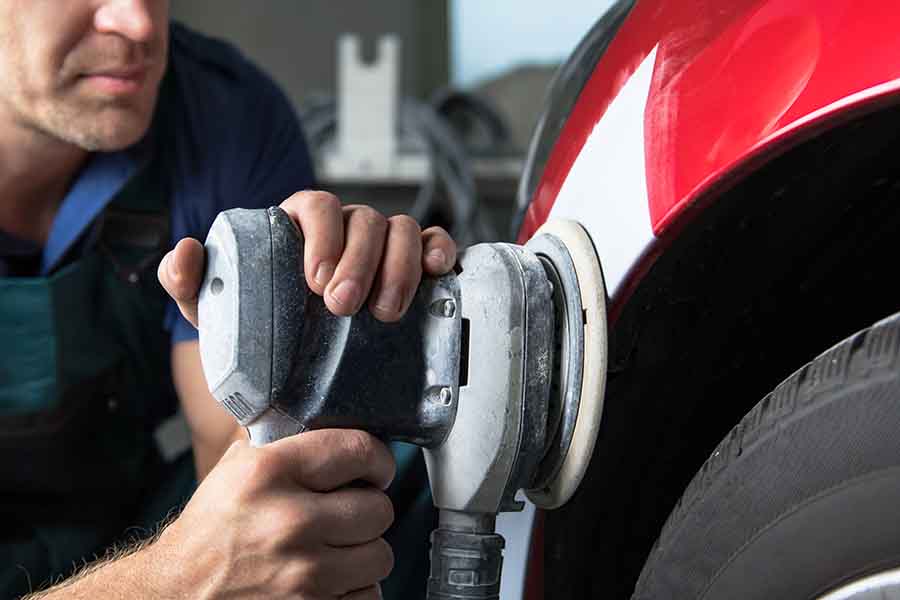Ever since cars hit the road, accidents have been an inevitable part of their journey, leading to innovations in repair techniques. Among these, the car frame straightening procedure stands out as a critical fix for vehicles that have suffered from structural damage. This process not only returns the car’s frame back to its original shape but also ensures the safety and longevity of the vehicle. It's a complex task that requires professional expertise, specialized tools, and a deep understanding of automotive structures. Whether it's a minor fender bender or a major collision, understanding how this procedure works can give you peace of mind knowing your vehicle can be restored to its pre-accident condition.
Understanding Vehicle Frames
Frame Basics
Vehicle frames act as the backbone of any car. They support the car's mechanical parts and body. Think of them like the skeleton in our bodies.
Frames are crucial for safety. They absorb crash energy, protecting passengers. Without a strong frame, cars would be much less safe.
Unibody Design
Unibody combines the car's body and frame into one piece. Most modern cars use this design. It makes cars lighter and improves fuel efficiency.
However, unibody designs can be harder to repair after accidents. This is because damage to the body is also damage to the frame.
Body-on-Frame
Body-on-frame design means the car's body sits on top of a separate frame. This is common in trucks and SUVs. It offers durability and is easier to repair than unibody designs.
This separation allows for better off-road performance. Yet, it usually results in heavier vehicles with lower fuel efficiency.
Frame Damage Impacts
Frame damage affects a car's integrity and performance. It can lead to uneven tire wear, poor alignment, and unsafe driving conditions.
Even minor accidents can cause hidden frame damage. This is why inspections are vital after a collision.
Repairing frame damage requires precision. Technicians use specialized equipment to return frames to their original shape.
Importance of Frame Straightening
Vehicle Safety
A straight frame is crucial for vehicle safety. It ensures that the car's structural integrity is intact. This affects how well the vehicle protects its occupants in a crash.
A damaged frame compromises the car's ability to absorb impact. It can lead to more severe injuries during an accident. Thus, frame straightening is not just about looks. It's about keeping you and your passengers safe.
Alignment Issues
Frame damage often leads to alignment problems. These issues can cause uneven tire wear, poor handling, and increased fuel consumption.
Correcting frame damage through straightening is vital. It restores proper alignment. This ensures the vehicle drives straight and reduces strain on its components.
Vehicle Value
Frame damage can significantly decrease a vehicle's value. Many buyers avoid cars with a history of frame repairs due to safety concerns.
However, professional frame straightening can help. It minimizes the impact on the vehicle's resale value. A well-documented repair may reassure potential buyers of the car's safety.
Functionality Restoration
For a vehicle to perform as designed, its frame must be in perfect shape. Frame straightening is essential for restoring a car's functionality after an accident.
Without this process, doors might not fit correctly, and mechanical parts could malfunction. Ensuring the frame is straight keeps everything working as it should.
Assessing Frame Damage
Visual Inspection
The first step in assessing frame damage involves a visual inspection. Technicians take a close look at the car's structure to identify any visible signs of damage. This includes bends, cracks, or any deformities on the frame. They also check for misalignments that could affect the car's performance.
Visual inspection is crucial. It gives technicians an initial idea of the damage extent. However, it's only the beginning.
Measurement Tools
After visual checks, specialists use advanced measurement tools for a more precise assessment. These tools include laser measuring systems and computerized equipment that provide accurate data on the frame's condition.
These technologies help pinpoint exact damage locations. They measure deviations from the original frame specifications with high precision. This step ensures that all issues are identified, even those not visible to the naked eye.
Professional Evaluation
A professional evaluation is key to determining if a frame can be straightened. Experts analyze the collected data to decide on the best repair approach. They consider several factors, such as the severity of damage and impact on vehicle safety.
Only qualified professionals should perform this analysis. Their expertise ensures that cars are safely and effectively repaired, maintaining their structural integrity.
Importance of Specialized Equipment
Specialized equipment plays a vital role in assessing frame damage accurately. Without these tools, it would be challenging to determine the full extent of damage or ensure repairs restore the vehicle to its original condition.
Using state-of-the-art technology guarantees precise assessments. It allows for effective planning and execution of frame straightening procedures.
Detailed Procedure for Straightening
Setup Process
Before applying any corrections, technicians must securely mount the vehicle on a frame straightening machine. This step is crucial for ensuring safety and precision throughout the procedure.
The car is anchored at specific points to stabilize it. Technicians use clamps and chains for this purpose. They ensure the vehicle does not shift during the straightening process.
Applying Pressure
Once the vehicle is firmly in place, specialists begin the actual straightening work. They apply pressure to the frame at strategic locations. This is done using hydraulic tools and equipment designed for this task.
The goal is to gradually return the frame to its original shape. Technicians increase or decrease pressure based on real-time observations. They often rely on their experience and expertise to make these adjustments.
Measurement Verification
After adjusting the frame, verifying the alignment is essential. Specialists use advanced measuring tools for this step. These tools provide precise measurements, showing how well the frame aligns with manufacturer specifications.
Technicians compare current measurements against factory standards. They check every angle and dimension. If discrepancies exist, further adjustments are made until the frame meets all specifications.
Timing and Safety Considerations
Process Duration
The time it takes to straighten a car frame can vary widely. It usually depends on the extent of damage and the type of vehicle. For minor adjustments, technicians might need only a few hours. However, for more severe deformations, the process could extend to several days. On average, expect a timeframe of 1 to 3 days for most repairs. This allows mechanics to meticulously assess and correct the frame's alignment, ensuring the vehicle's safety and functionality are restored.
Professionals use specialized equipment to measure and adjust the frame with precision. They work carefully to return the vehicle's structure to its original specifications. This attention to detail is crucial for maintaining the car's integrity and performance.
Safety Protocols
Safety is paramount when straightening a car frame. Technicians follow strict protocols to protect themselves and ensure the vehicle's structural integrity is not compromised further. They wear protective gear and use tools designed to minimize risk during the procedure.
Adhering to these safety measures prevents accidents in the workshop. It also guarantees that the repair work meets industry standards. Vehicles with properly repaired frames are safer to drive, reducing the risk of injury in case of another accident.
Risks of Ignoring
Driving a vehicle with a compromised frame poses significant risks. It can affect the car's stability, making it difficult to control, especially at high speeds or in harsh driving conditions. This increases the likelihood of accidents.
Moreover, a damaged frame can impact other critical components of the vehicle, such as the suspension system and wheels. This can lead to uneven tire wear, poor alignment, and additional strain on various parts, resulting in costly repairs down the line.
Ignoring frame damage compromises not just your safety but also that of other road users. It is essential to address any issues promptly and professionally.
Costs Involved in Straightening
Ballpark Figures
The cost of straightening a car frame can vary widely. On average, vehicle owners might spend between $600 and $1,000 for minor straightening repairs. However, for more severe damage, the price can easily exceed $2,000. These figures serve as a general guide, but the final cost depends heavily on specific factors related to the damage and the vehicle itself.
Car owners should be prepared for these expenses and seek detailed estimates from professionals. This upfront investment not only ensures vehicle safety but also preserves its value over time.
Damage Extent
The extent of the damage plays a crucial role in determining the cost of frame straightening. Minor bends and dents are less expensive to repair, often falling at the lower end of the cost spectrum. In contrast, significant structural damage requires more labor, time, and materials, which substantially increases the price.
Technicians need to assess the vehicle thoroughly to understand the severity of the damage. This evaluation is critical because it influences both the cost and the approach to repair. Ensuring that all underlying issues are addressed during the straightening process is essential for maintaining the vehicle's integrity.
Insurance Coverage
Many car insurance policies cover frame repair costs, especially if the damage results from an accident. Vehicle owners should consult their insurance providers to understand their coverage details. In some cases, insurance can significantly reduce out-of-pocket expenses for repairs.
However, it's important to note that claiming insurance may affect future premiums. Owners must weigh the benefits of filing a claim against potential increases in their insurance costs. This decision should be informed by a thorough understanding of their policy terms and conditions.
Choosing a Competent Body Shop
Certified Technicians
Finding the right body shop is crucial for car frame straightening. It's essential to research shops with certified technicians. Certification means they have the training to do the job right.
Look for positive reviews online. Happy customers often share their experiences. This can give you confidence in your choice.
Experience Matters
Ask about the shop's experience with frame straightening. Not all body shops have the skills for this specific task.
A shop experienced in frame straightening will likely deliver better results. They understand the nuances of different car frames.
Warranty Policy
Verify the shop's warranty policy on repairs. A good warranty shows the shop stands behind their work.
Make sure you understand what the warranty covers. Details matter when it comes to repair quality and customer satisfaction.
Enhancing Vehicle Safety Post-Repair
Regular Inspections
After a car frame straightening procedure, it's crucial to maintain the vehicle's safety. Regular inspections play a vital role in this. Owners should schedule these checks at least twice a year.
During an inspection, a professional can spot issues before they become serious. This proactive approach ensures that the vehicle remains safe for the road. It also gives peace of mind to the driver, knowing their car is in top condition.
Alignment Checks
Another key aspect of post-repair care is alignment checks. After any frame adjustment, ensuring the wheels are properly aligned is essential.
Misalignment can cause uneven tire wear and affect the car's handling. This can lead to safety risks and higher maintenance costs over time. Therefore, alignment should be checked as part of routine vehicle care after repair.
Repair Records
Keeping a detailed record of the repair is also important. This documentation should include before and after photos, a list of replaced parts, and a detailed description of the work done.
These records not only serve as proof of maintenance but also help maintain the car's resale value. Potential buyers often view detailed repair records as a sign of a well-maintained vehicle. It shows that the owner took steps to ensure the vehicle's longevity and safety.
Final Remarks
Car frame straightening is crucial for your vehicle's longevity and safety. You've seen the importance, from understanding vehicle frames to ensuring enhanced safety post-repair. The journey from assessing damage to the detailed straightening process, including timing, safety, and costs, shows it's not just about fixing; it's about restoring your car's integrity. Choosing a competent body shop is key. They bring expertise and precision to the table, turning a bent frame back into a safe, road-worthy companion.
Your car deserves the best care. Don't wait until it's too late. If you suspect frame damage, act now. Find a reputable body shop that can assess and correct any issues. It's about your safety, after all. Your vehicle is more than just transportation; it's a part of your daily life. Ensure it gets the expert attention it needs to keep you safe on the road.
Frequently Asked Questions
What is vehicle frame straightening?
Vehicle frame straightening is a repair process to correct structural damage to a car’s frame, restoring its proper shape and alignment for safety and performance.
Why is frame straightening important?
Frame straightening ensures the vehicle's structural integrity, optimal performance, and safety by returning the frame to its original specifications.
How do technicians assess frame damage?
Technicians use specialized equipment to measure frame deviations against the manufacturer's specifications, identifying areas needing correction.
What does the frame straightening procedure involve?
The procedure involves using hydraulic machines and computerized tools to gently push the frame back to its original shape, based on precise measurements.
How long does frame straightening take?
The time required varies depending on the extent of damage but generally takes from a few hours to several days.
What are the costs involved in straightening a car frame?
Costs can range widely based on damage severity and the model of the vehicle but expect it to be a significant investment due to the specialized equipment and expertise needed.
How do I choose a competent body shop for frame straightening?
Look for shops with certified technicians, positive reviews, and experience in handling your type of vehicle. Ensure they use up-to-date equipment and techniques.
